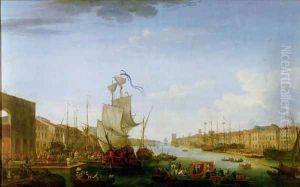Jean-Joseph Kapeller Paintings
Jean-Joseph Kapeller was a Luxembourgish painter, born in 1893 in Luxembourg City. He was a significant figure in the Luxembourg art scene during the first half of the 20th century. Kapeller's oeuvre primarily consists of landscapes, still lifes, and portraits, imbued with a sense of realism and a keen eye for detail. His work reflects a deep appreciation of the natural beauty and cultural heritage of Luxembourg, as well as an interest in the everyday lives of its people.
Kapeller trained at the École des Arts Décoratifs in Paris, which was a pivotal experience that shaped his artistic vision and technique. Paris, being the hub of artistic innovation in the early 20th century, exposed him to various movements and styles, including Impressionism and Post-Impressionism, which influenced his approach to color and composition. However, Kapeller's style remained distinct, characterized by a more traditional and meticulous depiction of his subjects.
Throughout his career, Kapeller gained recognition not only in Luxembourg but also abroad. He participated in numerous exhibitions and received several accolades that cemented his reputation as a leading Luxembourgish artist of his time. His works are part of collections in Luxembourg's national museums and have been featured in retrospective exhibitions, highlighting his contribution to the country's cultural legacy.
Jean-Joseph Kapeller passed away in 1962, leaving behind a rich legacy that continues to be celebrated in the Luxembourgish art world. His dedication to portraying the essence of Luxembourg through his art has made him an enduring figure in the nation's cultural history. Kapeller's life and work mirror the artistic transitions of the early 20th century, bridging traditional and modernist tendencies, and his paintings remain a testament to the beauty and complexity of Luxembourgish identity and landscape.
